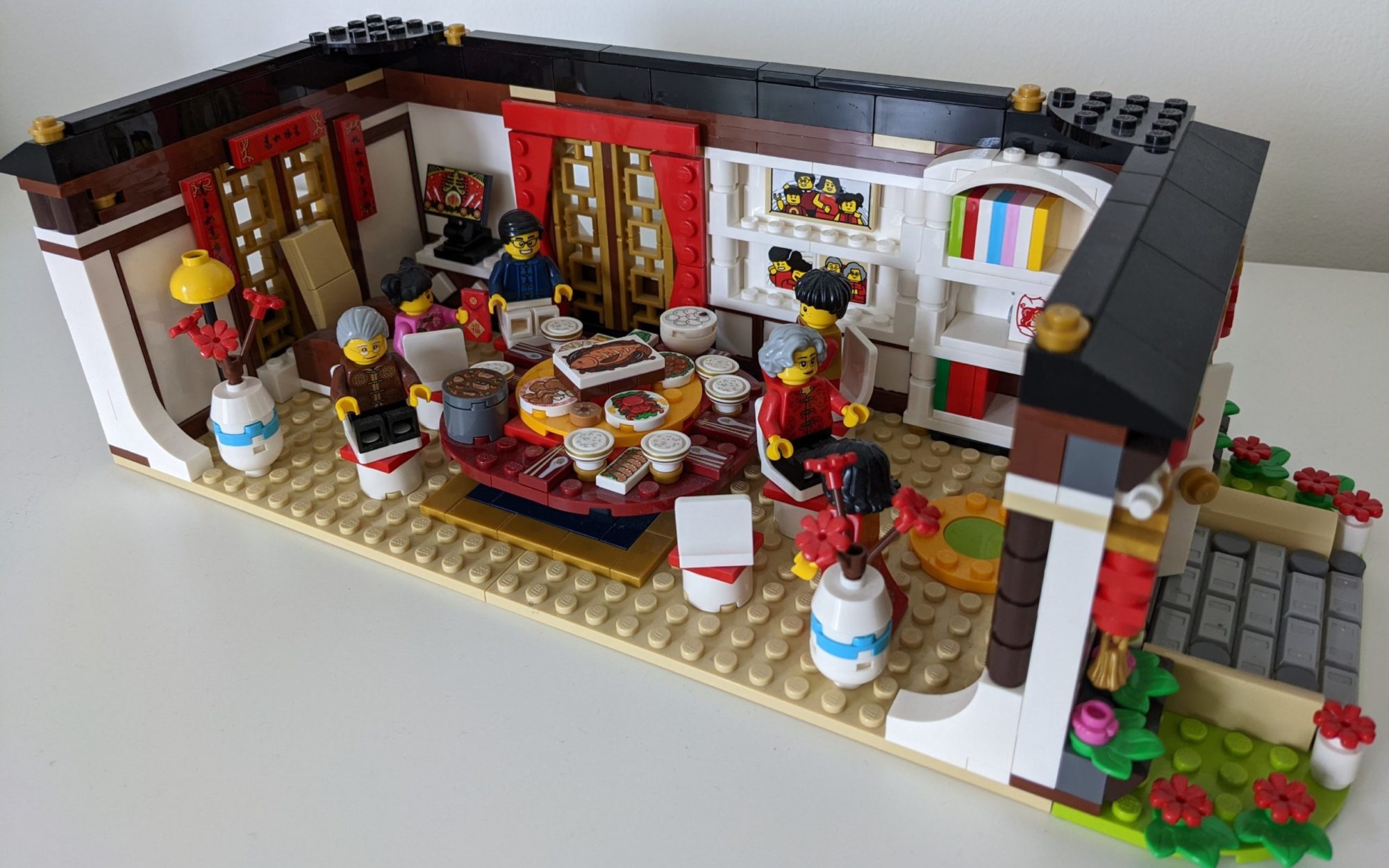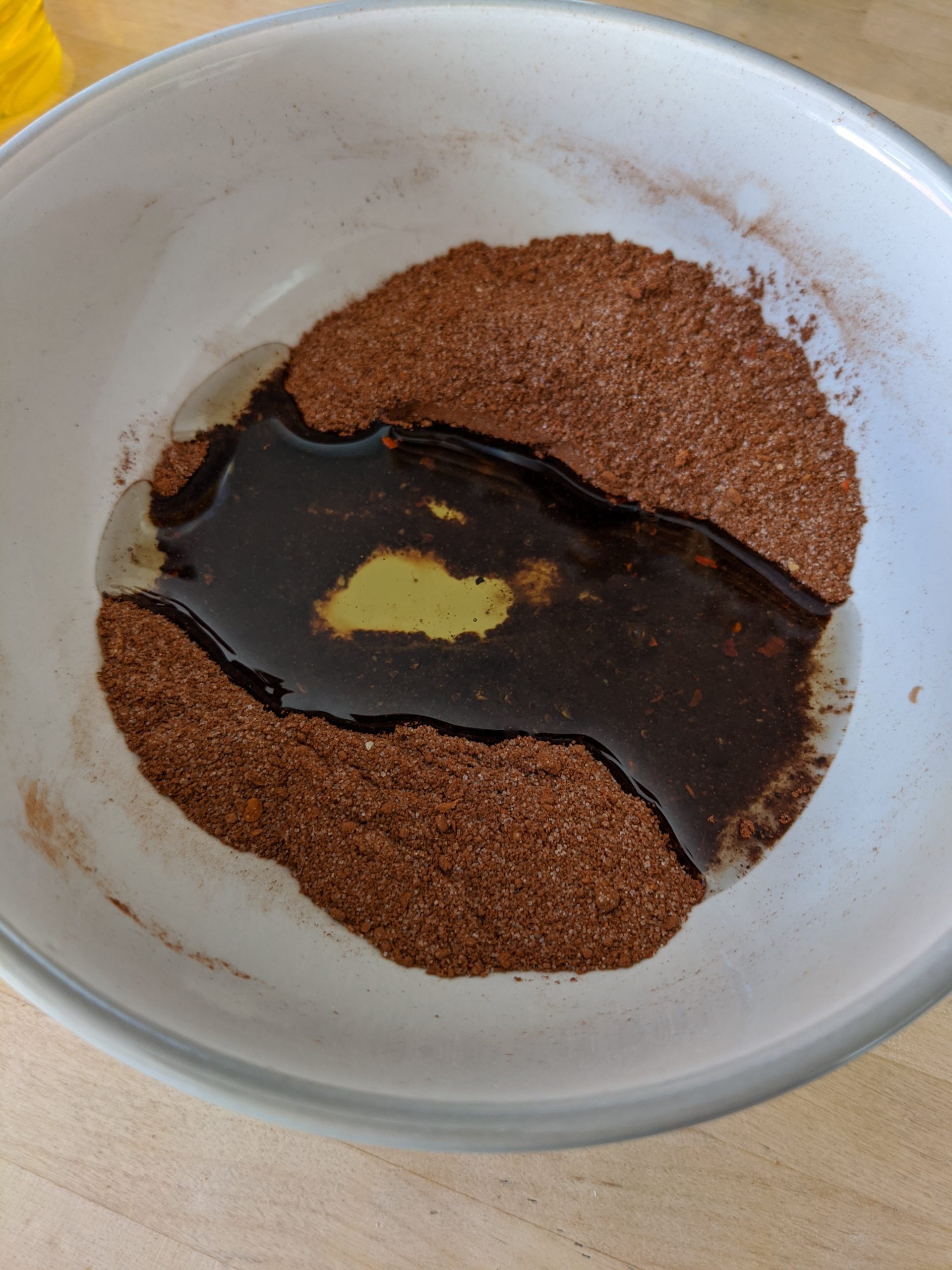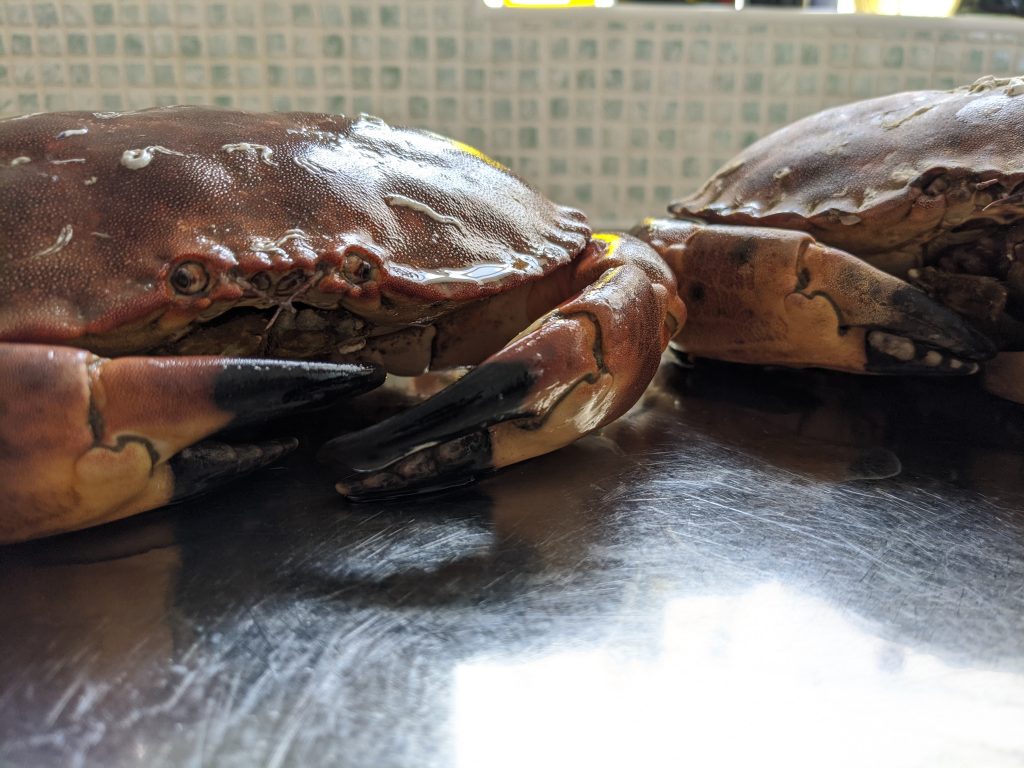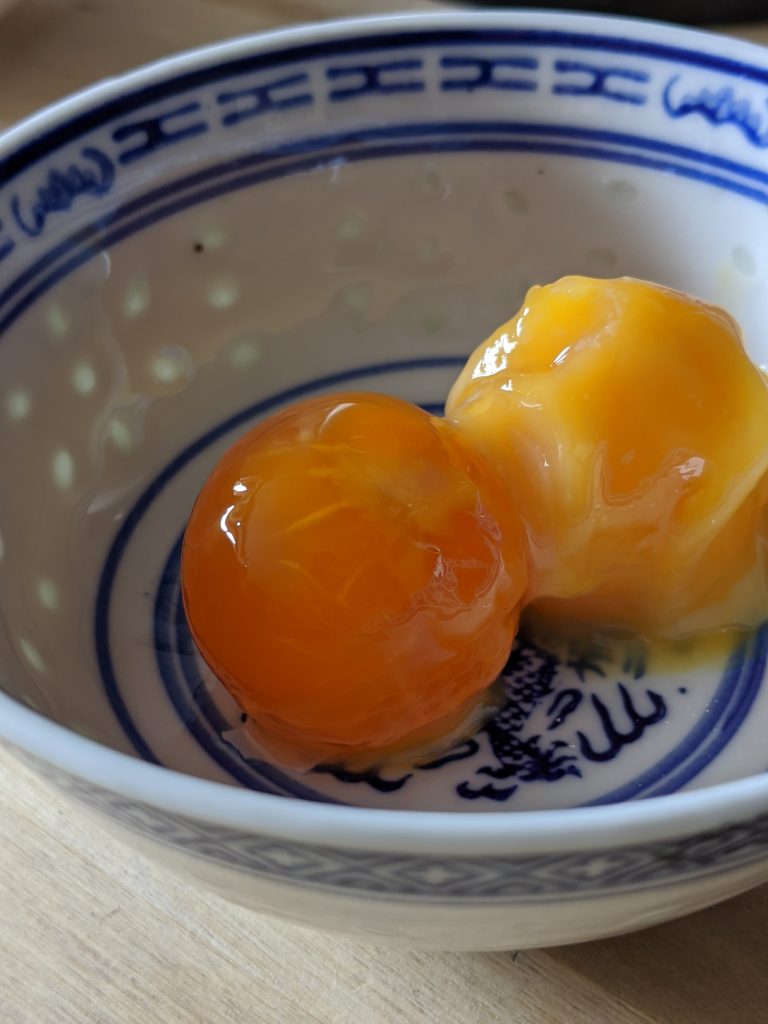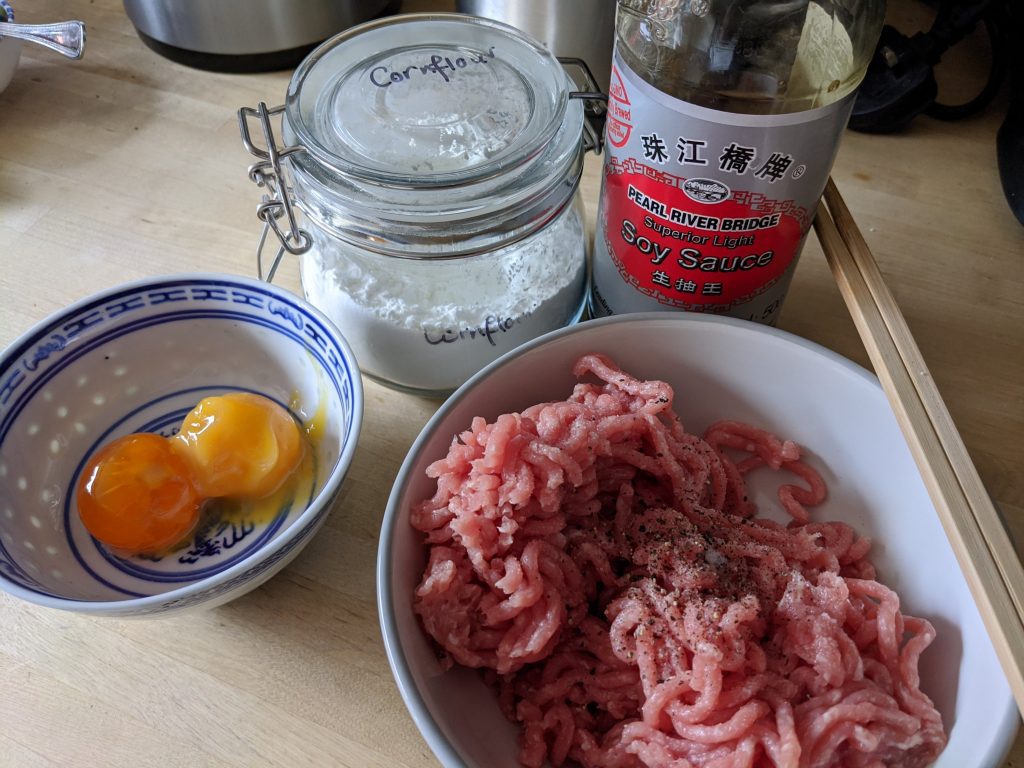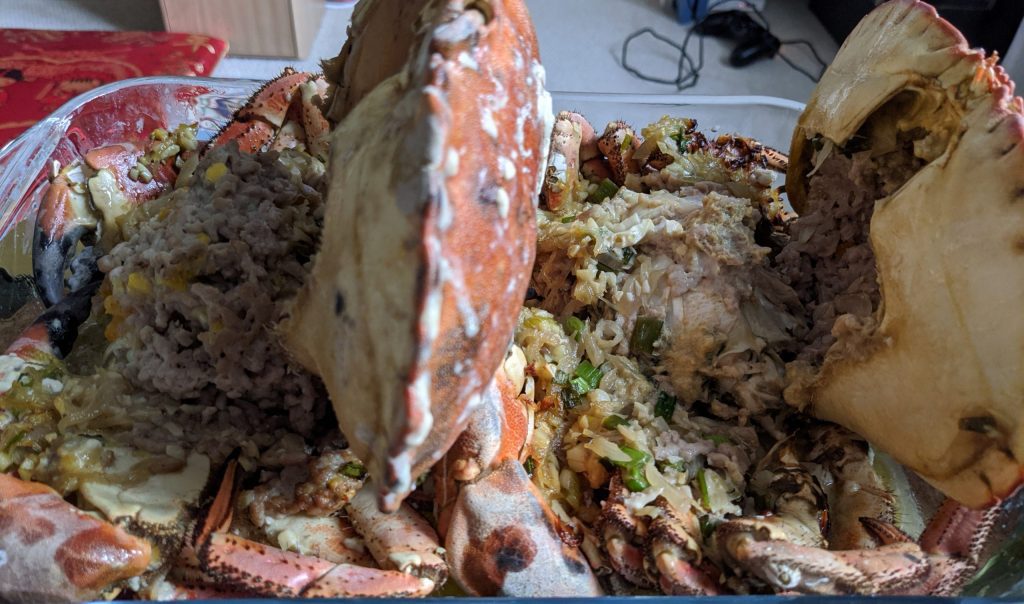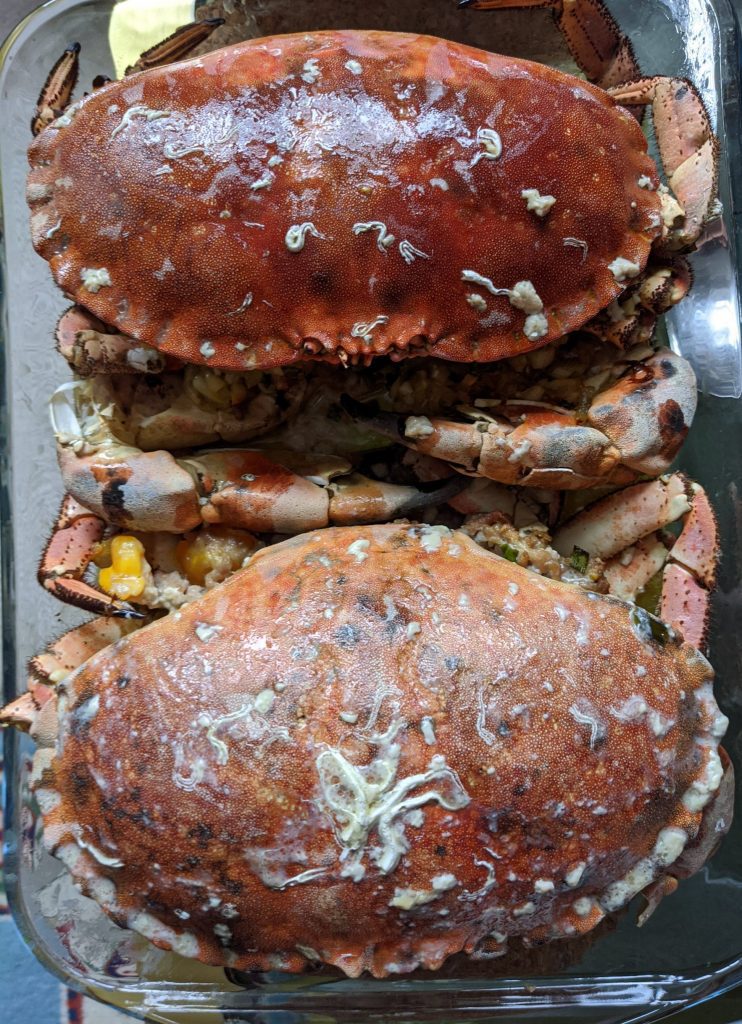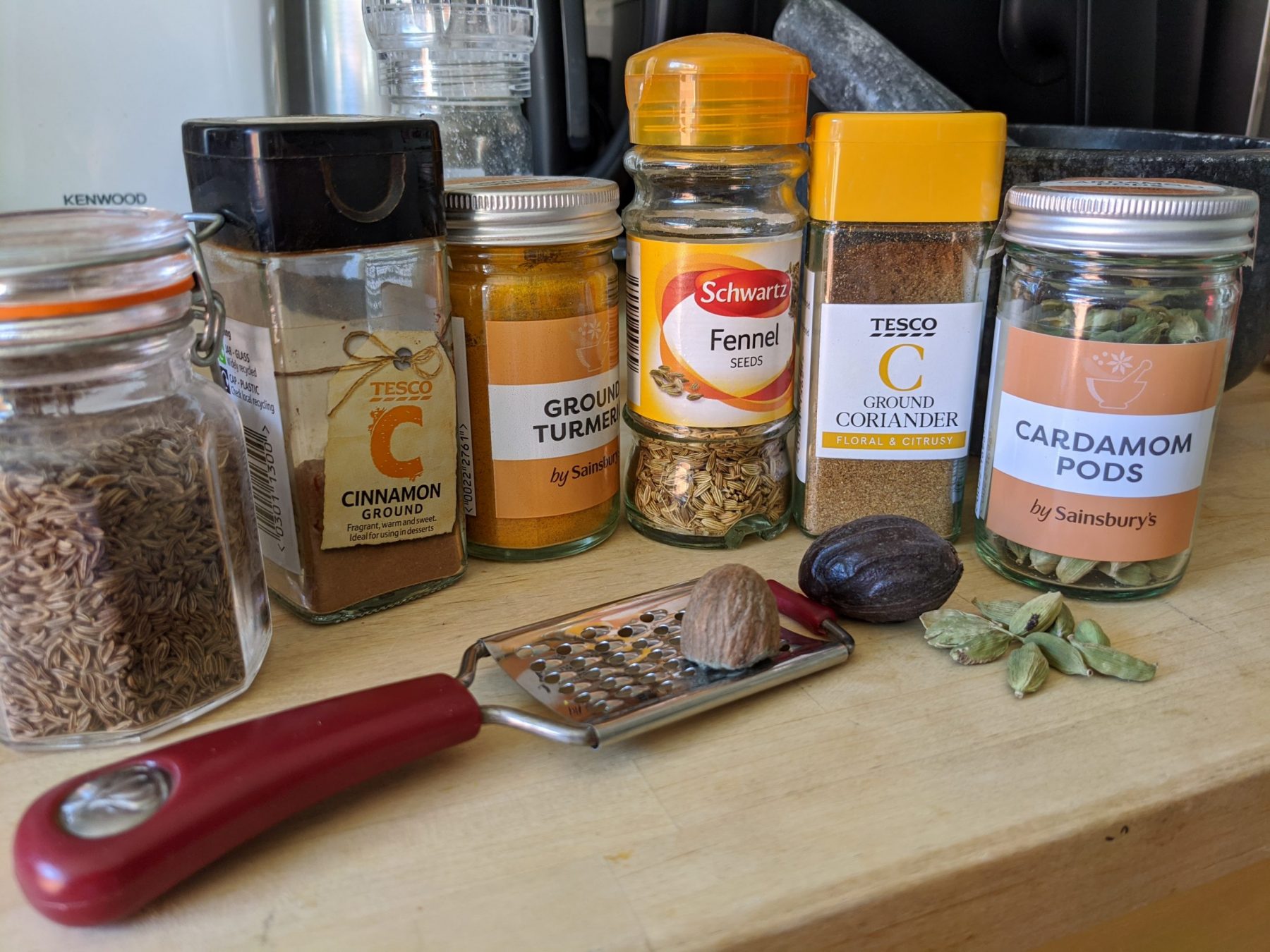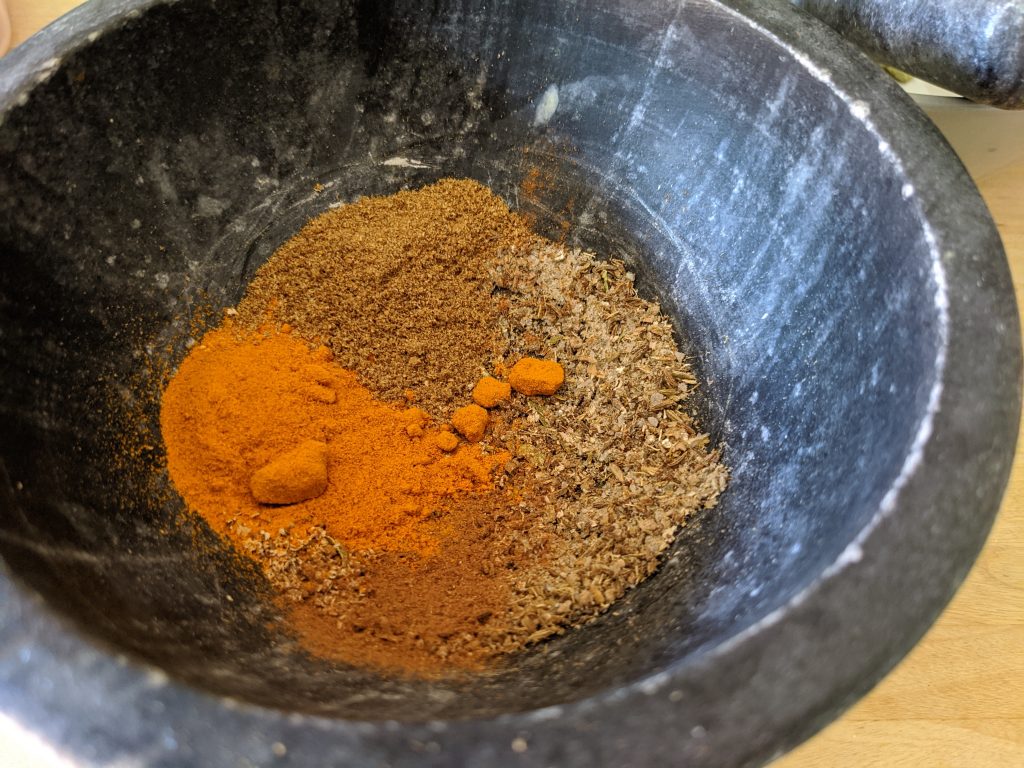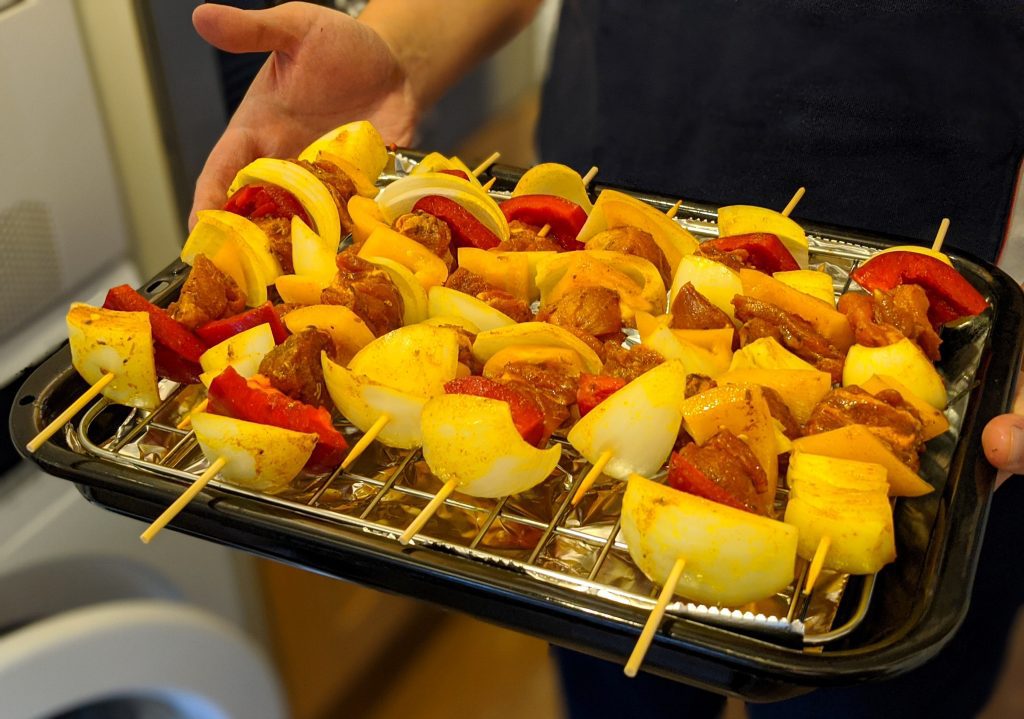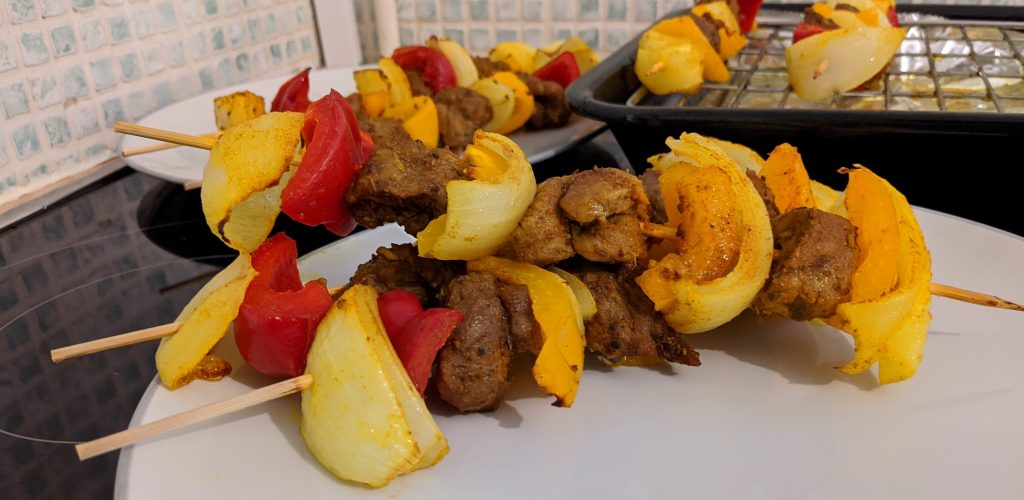
Yes, that’s right – chocolate. Mexican inspired flavours really. Very easy to make and the meat is very tender, falling off the bone.
I used one rack of pork ribs and to achieve a maximum surface area for the sauce to cling onto, I pre-cut the ribs before marinating. You can also use this recipe on a whole rack if you like.
Mix the dry ingredients of 1 tsp salt, 1tbsp of cocoa powder, 1tsp of chilli flakes and 1 tsp of allspice. The allspice brings a slight tangy twist to the cocoa that goes really well. Add about 2 tbsp of olive oil to make it into a loose paste so that you have enough to coat your ribs. If the paste isn’t loose enough, add a spoonful or two of water.
Then using my ‘go to’ method of marinating in a ziplock bag, pour the marinade into the bag and massage your ribs through the bag so they are all coated. Marinade for at least an hour or longer if you can.
Once the ribs have had enough time to soak up the goodness, preheat the oven to 200C. The texture we’re looking for is falling off the bone yet lickably sticky sauce. Place a piece of foil that is larger than your baking tray as the bottom of your parcel, pour your ribs with all the marinade liquid onto the foiled baking tray. Then use a piece of foil which is smaller in size than the bottom one to cover the ribs loosely and crimp the edges of the foil parcel with the bottom layer of foil. You want to create a slight cavern for the ribs to steam within the parcel. Create a few holes on the top layer of your parcel so some of the steam can escape.
Place into the preheated oven and turn it down to 180C. After 25 mins, turn the ribs over and place the top foil loosely back onto the parcel for the last 10 minutes – this will give you the slight burnt edges on the ribs.
When serving, spoon over some of the juices which will have caramelised on your baking foil tray (not the oil!).
Happy eating! 🤤
